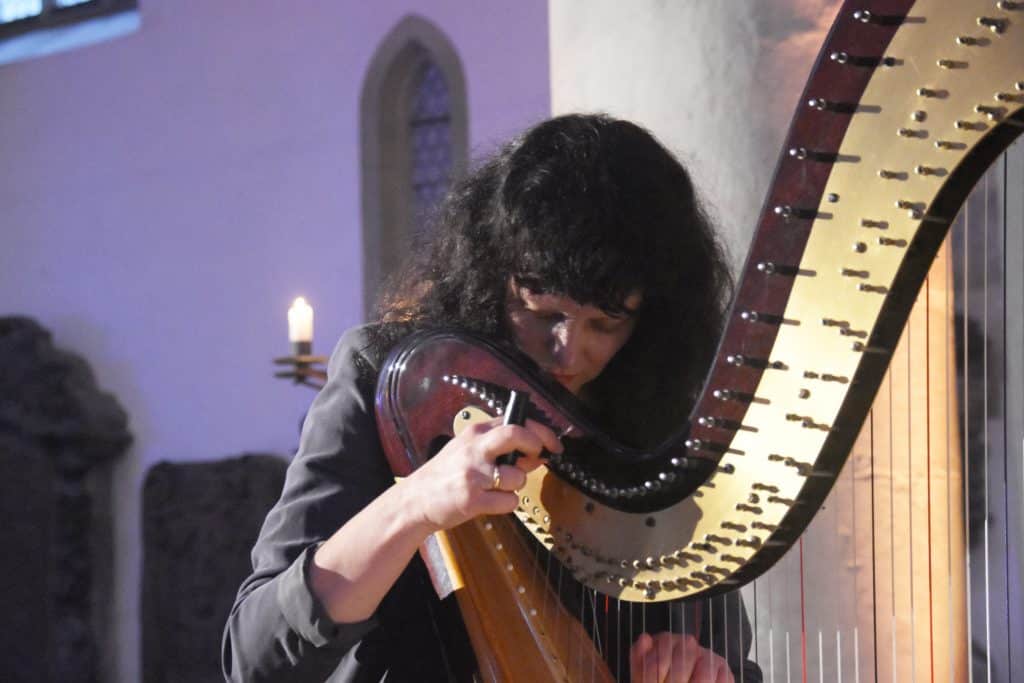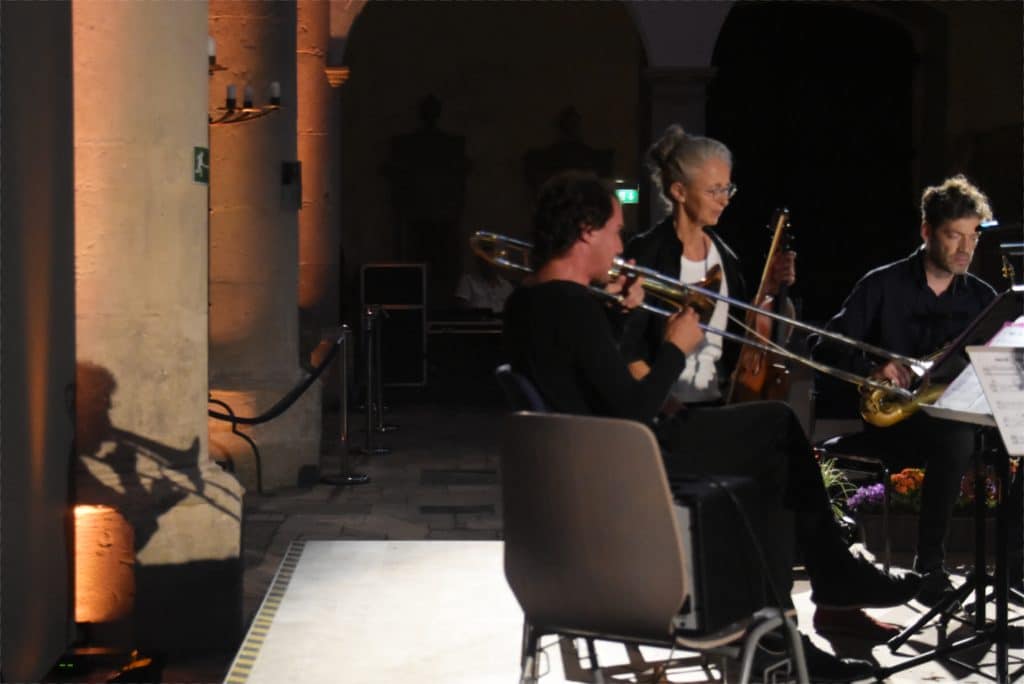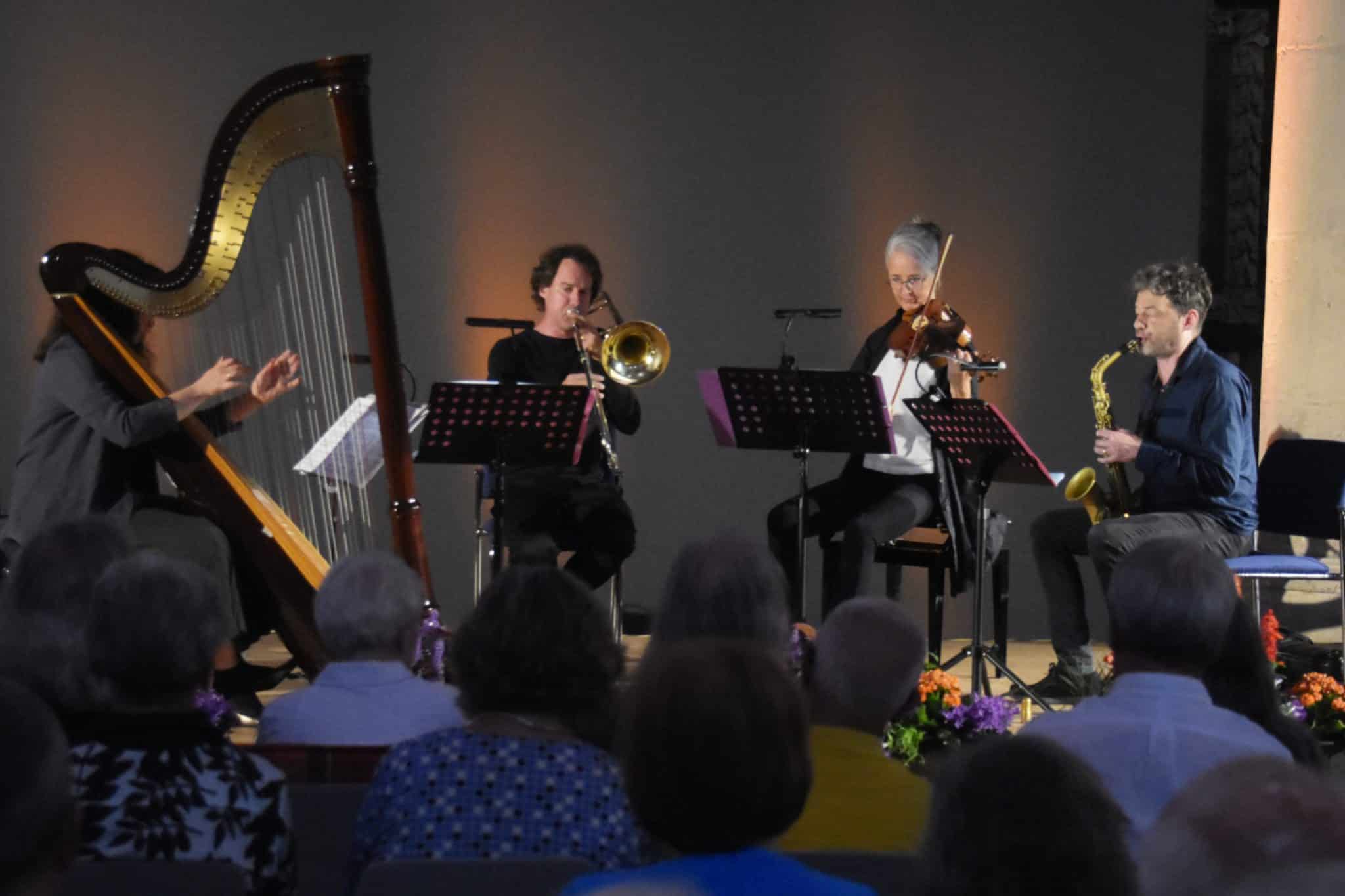The last of this year’s four serenade concerts was a departure into new territory . “We wanted to bring in a different sonic palette,” explained Andreas Meixner, who alongside Professor Stefan Baier is artistic director of the concert series at the Minoritenkirche. And with trombonist Nils Wogram and his latest band project Muse the pair achieved their aim with resounding success.
Wogram, who has appeared often and in several different groups at the Jazzclub im Leeren Beutel next door to the church, has broken completely new ground with this chamber music ensemble. The line-up is a quartet of harp, played by Kathrin Pechlof, viola played by Gerdur Gunnarsdottir, the alto saxophone of Christian Weidner, and Wogram himself. It is not just atypical for jazz but also quite a stretch for the habitués of classical music.
The group plays seated, chamber music style, which suits the music that composer Wogram has written. It is calm and full of tonal shadings and subtle colourings, to bring out the special virtues of what is probably a unique combination of instruments in contemporary jazz. On the muted trombone, Wogram himself breaks through the expectant silence in the nave of the church with an almost tenderly restrained riff, which is joined after a few bars by the harp as an accompanying voice.
Weidner breaks through the sensual, dark mood with a bright melody line that fills the room and lights it up. The alto saxophonist, like the fantastic Icelandic viola player, had only joined the band a few days earlier. The two replaced Hayden Chisholm (as) and Gareth Lubbe (viola, v), who were unable to attend this performance. After just two rehearsals, they had already become so familiar with the pieces from the band’s album, it was as if these two new musicians had been cast from the same mould as the others. They had also become quickly accustomed to the long reverberation of the church during the afternoon sound check and, with the exception of the harpist, played unamplified and with restrained dynamics.

Wogram was at his most remarkable when playing with circular breathing, polyphonic singing and whistling with overtones. Some of his pieces in which he used these multiphonics took on an atmosphere of intimate magic. The predominantly quiet core mood of Wogram’s sensual, sound-intensive music was only occasionally broken up by short improvisations. Weidner’s playing, reminiscent of the aesthetics of Norwegian saxophonist Jan Garbarek, made one barely notice the street noises penetrating from outside. Duets in different combinations constantly created new colours and sound moods, while the rare polyphonic tutti passages gave an impression of how well the four of them listen to and harmonise with each other. After pictorial compositions such as “Hope and Fear”, “Chillin with J” or “Hart to like him”, the quartet built a bridge to classical music with an encore by Gabriel Fauré. It was superb – if all goes well, there will be a sequel to their 2020 album next year.



